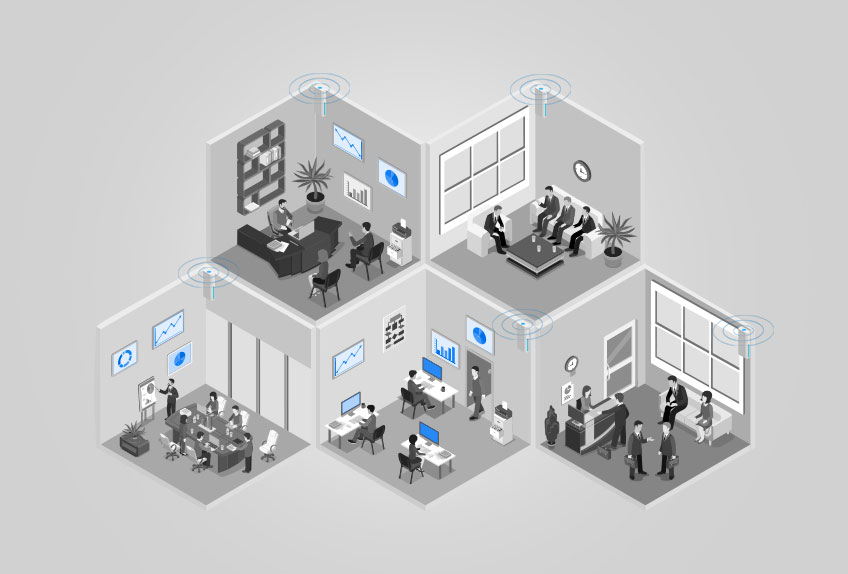5G deployment across the United States is underway to bring high speeds, increased bandwidths, and lower latency for a truly connected ecosystem. With the deployments across the country, it is essential that proper and standardized infrastructure is built to support the 5G connectivity.
According to many reports, the impact of 5G will allow the development of smart cities across the country by 2030 which clearly lays out the scope of 5G for both outdoor and in-building coverage. This will require proper planning and overhaul of the current infrastructure to support and avail the full potential of 5G.
5G has many use cases for indoor applications involving enterprise collaborations and numerous Augmented and Virtual reality applications. For this to happen network providers and product companies have to rely on an uninterrupted and high speed cellular data service. This means office and apartment buildings will need their current in-building wireless systems upgraded. Small cells are often considered the best option for in-building wireless and can integrate multiple carriers. Small cells are however not the most cost-effective option out there. A hybrid Distributed antenna system (DAS) is being used along with small cells to create a more economically viable solution. Let us understand how small cells and hybrid distributed antenna systems (DAS) help in ensuring an uninterrupted 5G experience indoors.
Small cells
Small cells were typically used in places where the connectivity problem related to either fragmented coverage or strain in the current capacity.
To know more about small cells click here.
It is for this reason why small cells are being used by cellular service providers to ensure proper connectivity at all critical points. Small cells connect directly to the carrier network over the internet to generate high-quality signals across multiple meters. This gives small cells the extensive coverage range and works wonders especially when multiple carriers and frequency bands need to be integrated.
The problem with small cells is that they are an expensive technology and the price to value does not make small cells a viable choice when the deployment is done over a large space. Using hybrid DAS along with small cells is a more cost-effective solution by reducing the number of small cells required. Using a lesser number of small cells as a signal source for a hybrid DAS system significantly increases the coverage area without the additional strain in the pockets.
Hybrid Distributed Antenna Systems
There are 3 different types of DAS solutions: passive, active and hybrid. Each of these solutions differs in its application and complexity.
To know more about the different Distributed Antenna Systems (DAS) click here.
Hybrid DAS solutions borrow their strength by combining both passive and active DAS to give enterprises and large venues a more cost-effective solution to enhance and expand their 5G capabilities.
Solution using Hybrid DAS and small cells
Using a combination of hybrid DAS and small cells is the answer when it comes to balancing cost and effectiveness for an in-building cellular connectivity solution.
To drive better value for the building owners, solutions are targeted at using fewer small cells as the signal source and leveraging on hybrid DAS to amplify and transmit the signal across the building.
The solution for 5G deployment will continue to innovate and evolve and we at Kaytech Coverage Solutions at our core are excited to bring these solutions to our clients. We are constantly evolving and fostering new partnerships to strengthen our offerings for 5G amplifications. We believe the efficient use of established infrastructure can go a long way to support a new generation of network connectivity.
We have a team of expert connectivity engineers to design efficient and cost-effective DAS and small cell solutions with post-support maintenance. Write to us by visiting https://ktcoverage.com/contact for a free consultation and audit.


